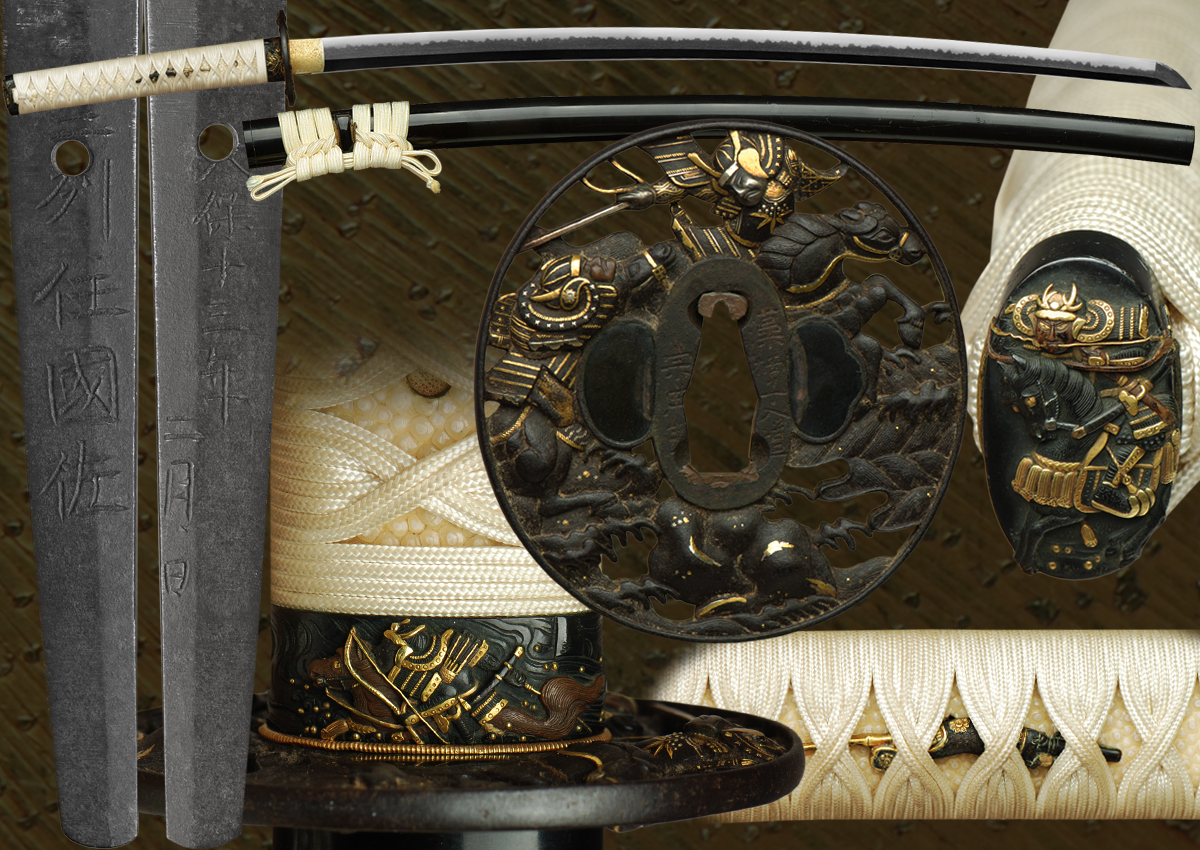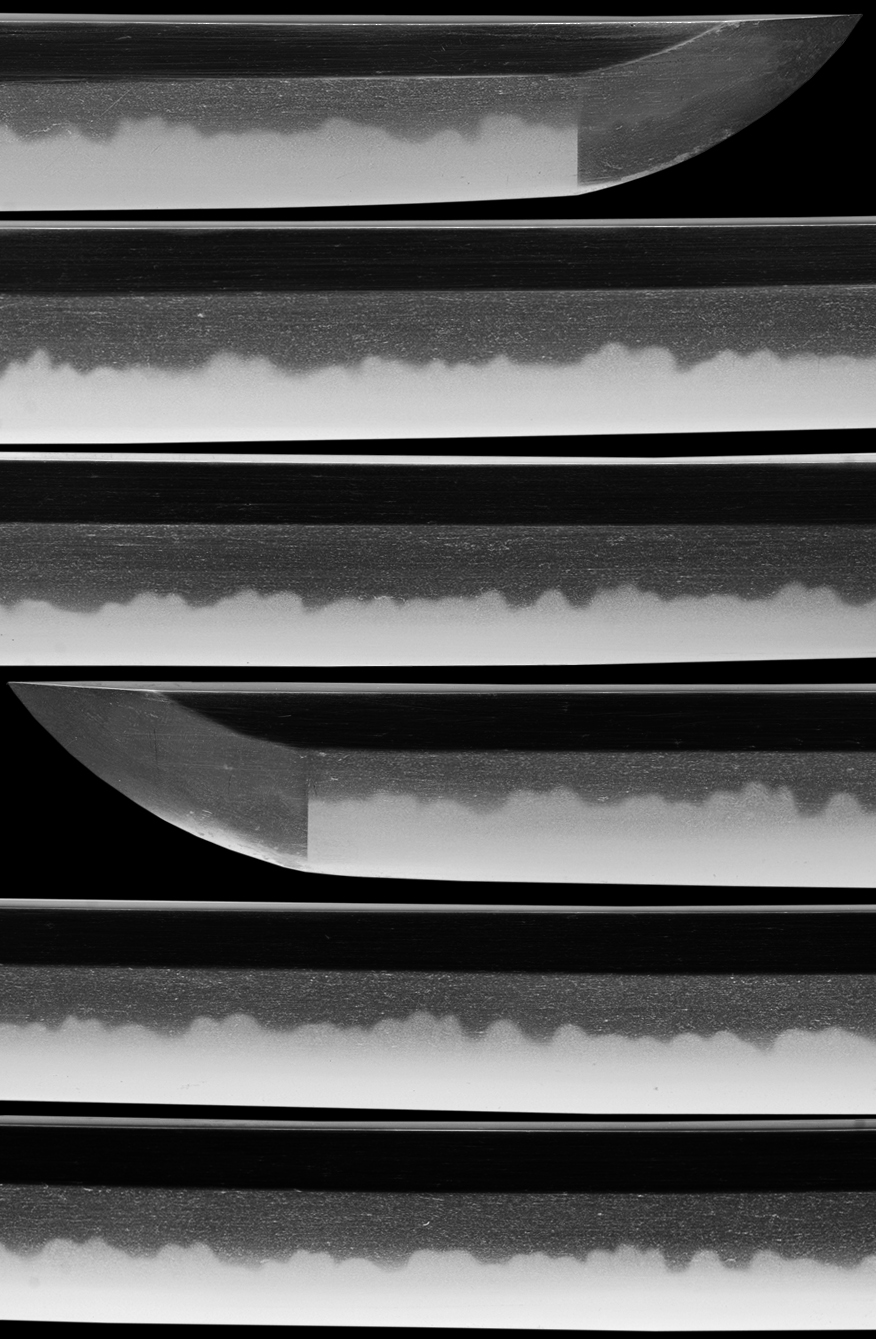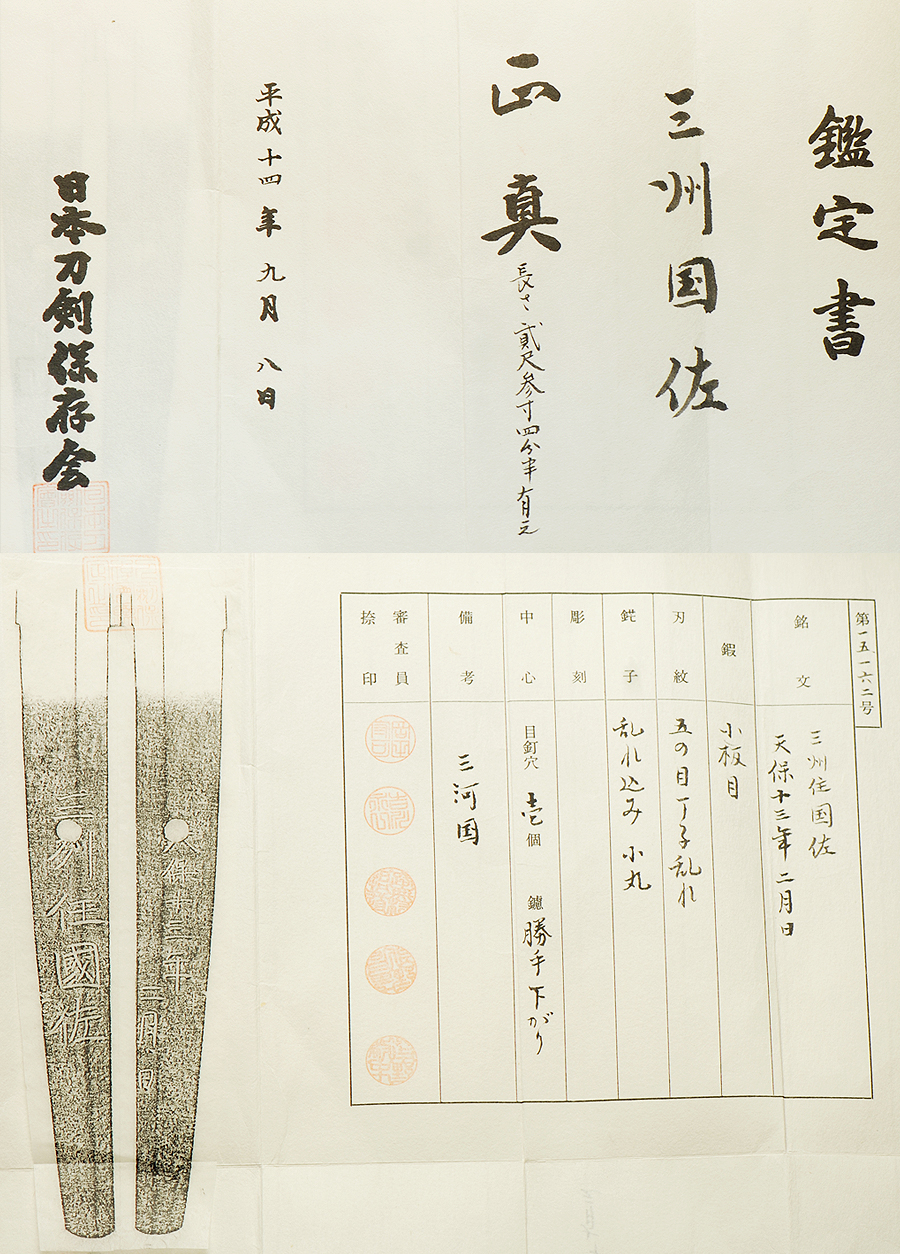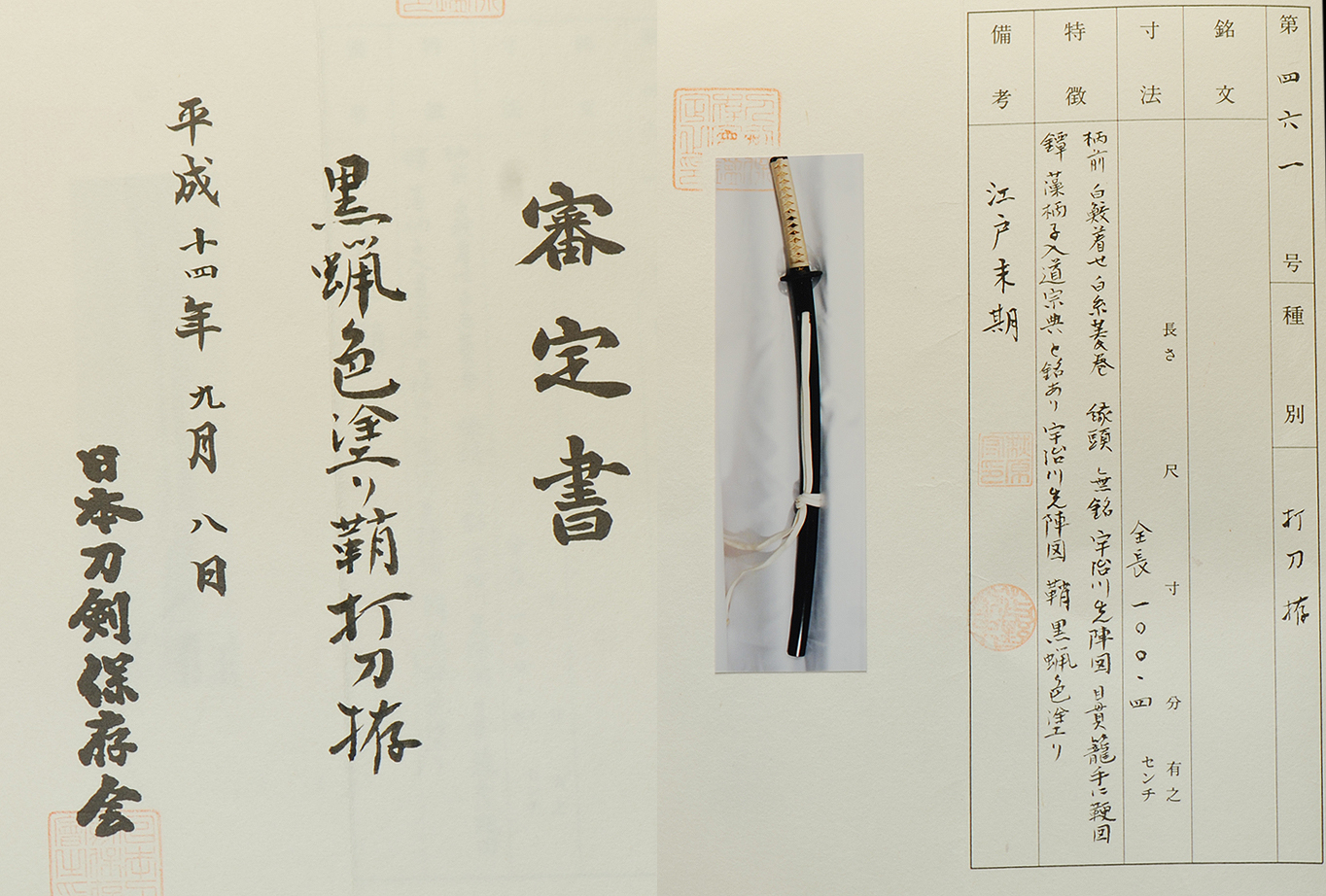A MAIN LINE STUDENT OF MUNETSUGU
blade by Sanshu Ju Kuni Suke ( His family name was Sukigawa ). This beautiful katana in the tradition of the Bizen school this sword exemplifies the late Munetsugu school of the Shinshinto era. As you can see in our new High Resolution photographs the hamon is an active mixture of large choji/gunome with an overall notare shape. There is ara-nie in abundance and hotsure. The boshi is a midare-komi with kaen. The hada is a tight ko-itame with mokume mix and ji-nie appears, a beautiful tight hada to accentuate this glowing hamon. The sword has a wonderful curvature and the overall sugata suggests a time forgotten.
The koshirae is a Soten collectors dream and papered. Depicting the battle of Ujigawa, an intricately carved Soten tsuba and signed. The tsuba is a scene of Samurai in battle on horseback and a theme often used by Soten. A Glossy black lacquered saya finishes the mounts in true samurai style. The Tsuka ito is white with white Sageo.
A student of Munetsugu this blade is a masterpiece of Kunisuke in the tradition of Munetsugu.:
A note on the master Munetsugu:
After his apprenticeship he worked for the Matsudaira daimyo of the Kuwana Han in Edo in the 1830s, who extensively tested the swords he supplied through Yamada Asauemon (Yoshimasa), Yamada Gosaburô, and Iga Norishige. This no doubt helping him refine the cutting ability of his works. His work appears to have been very popular, as he left behind a large number of high quality items, and famous people of the time owned Munetsgugu swords. These include the Goto master craftsman Ichijo, the Furukawa daimyo Doi, and the Uwajima daimyo Date and interestingly the 7th Yokozuna sumo wrestler Inazuma (“Lightning”) Raigoro (pictured to the right). So by this we can determine that he was very successful at his craft, both in making functional blades due to his work with the various cutting masters, and in reputation, making beautiful blades that were owned at the highest level of society.”
An excerpt:
SOTEN WORK
Haynes summarises the present thinking regarding the Sōten group of Japanese sword guards when he states, in his Index of Japanese Sword Fittings and Associated Artists, that work by Sōten I, the first artist of the Kitagawa School, is very rare. He suggests that, prior to his use of the Buddhistic title of nyūdō which followed the shōdai’s early move from Kyoto to Hikone, his name was read as Munenori. Most of the work of this artist was in solid plates of iron or shakudō; openwork designs were very rare. There is now some doubt as to whether Kitagawa Shūten was the same artist as Sōten I, as once he was thought to be.
The work of Sōten II, the son of the former artist, is difficult to distinguish from that of his father. He probably made some openwork pieces, both in iron and shakudō, but not featuring warrior subjects. The existence of a third generation is now questioned and, if such an artist existed, his work cannot be distinguished from the many students and followers who signed their work as being by Sōten.
- Mei: Sanshû-jû Kunisuke (三州住国佐)
- Date: Tenpô jûsannen nigatsu hi (天保十三年二月日, “on a day of the second month Tenpô 13 [1842]”)
- Nagasa: 28 inches
- Sori: 18.0 mm
- Width at the ha-machi: 29.3 mm
- Width at the yokote: 20.7 mm
- Thickness at the mune-machi: 7.5 mm
- Construction: Shinogi zukuri
- Mune: Iori
- Nakago: Ubu
- Kitae: ko-Itame
- Hamon: Gunome-midare choji
- Boshi: midare-komi with a ko-maru-kaeri
- Condition: Good older polish (minor scuffing and staining)
Email us if your interested in this item and remember to include the order number for this item: fss-722.
kantei-sho (鑑定書) – Appraisal Sanshû Kunisuke (三州国佐)
shôshin (正真) – Authentic
nagasa 1 shaku 1 sun 4 bu kore ari (長さ貮尺参寸四分半有之) – Blade length ~71.0 cm
Heisei 14 nen 9 gatsu 8 nichi (平成十四年九月八日) – September 9th 2002 Nihon Tôken Hozon Kai (日本刀剣保存会) – NTHK
No 15,162
meibun (銘文) – Signature: Sanshû-jû Kunisuke (三州住国佐)
Tenpô jûsannen nigatsu hi (天保十三年二月日, “on a day of the second month Tenpô 13 [1842]”)
kitae (鍛) – Foging: ko-itame
hamon (刃紋) – Hardening: gunome-chôji-midare
bôshi (鋩子) – Hardening in tip: midare-komi with a ko-maru-kaeri
chôkoku (彫刻) – Engravings:
nakago (中心) – Tang: mekugi-ana (目釘穴) 1, yasurime (鑢): katte-sagari
bikô (備考) – Remarks: Mikawa province
shinsa’in natsu’in (審査員捺印) – Seals of Judges: 5 seals
shintei-sho (審定書) – Certificate
Kuro rôiro-nuri saya uchigatana-koshirae (黒蝋色塗り鞘打刀拵) – Uchigatana-koshirae with black glossy saya
Heisei 14 nen 9 gatsu 8 nichi (平成十四年九月八日) – September 8th 2002
Nihon Tôken Hozon Kai (日本刀剣保存会) – NTHK
No 461 Classification: uchigatana-koshirae
meibun (銘文) – Signature:
sunpô (寸法) – Measurements: overall length 100.4 cm
tokuchô (特徴) – Features: Tsuka with white same and wrapped with white tsuka-ito with hishimaki; fuchigashira unsigned, depicting the Vanguard at Ujigawa; menuki depicting kote gauntlet and whip; tsuba bearing the mei “Sogarashi Nyûdô Sôten” (藻柄子入道宗典), depicting the Vanguard at Ujigara; saya in black glossy lacquer
bikô (備考) – Remarks: End of Edo period [seals of 2 judges]
For Sale
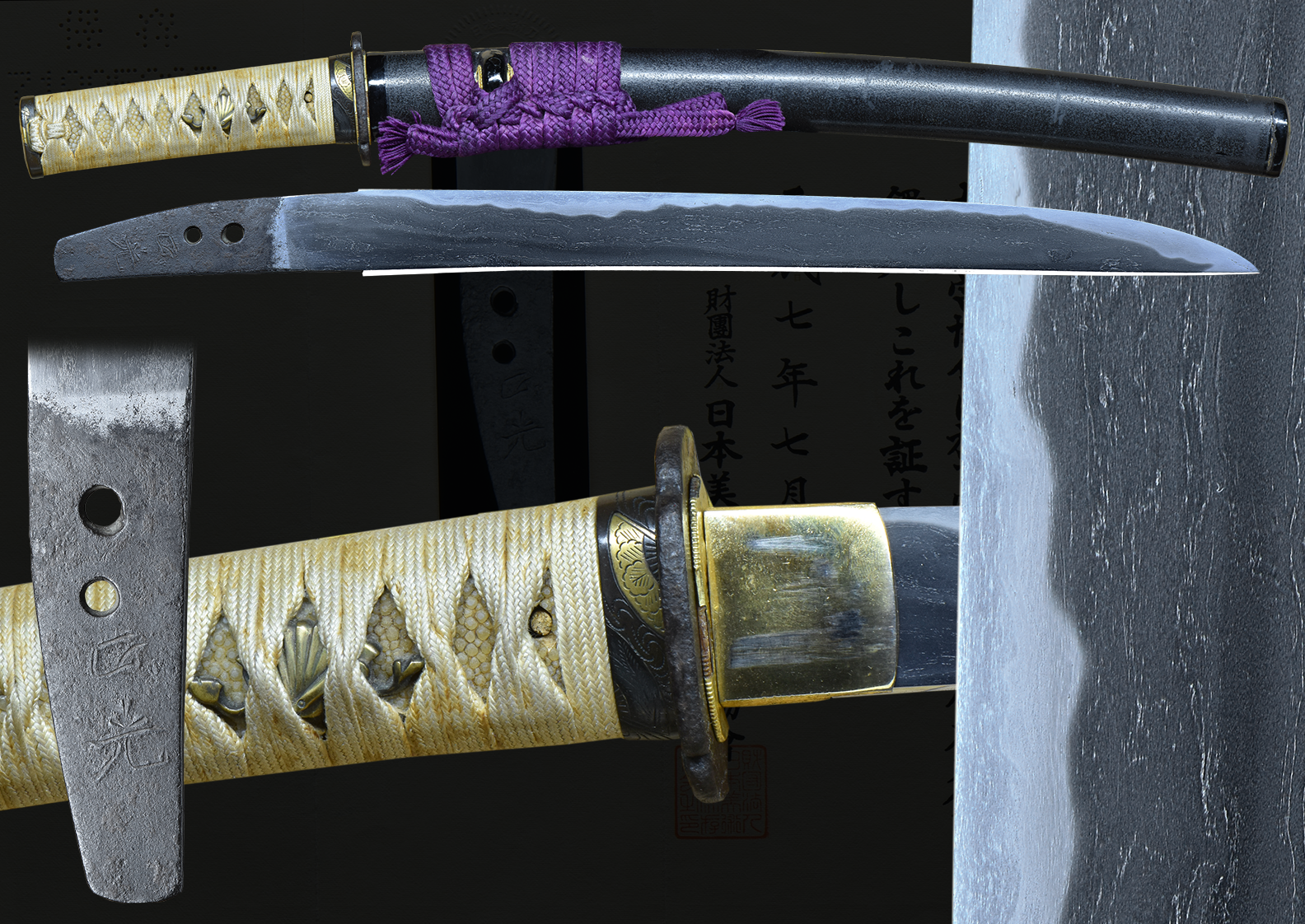
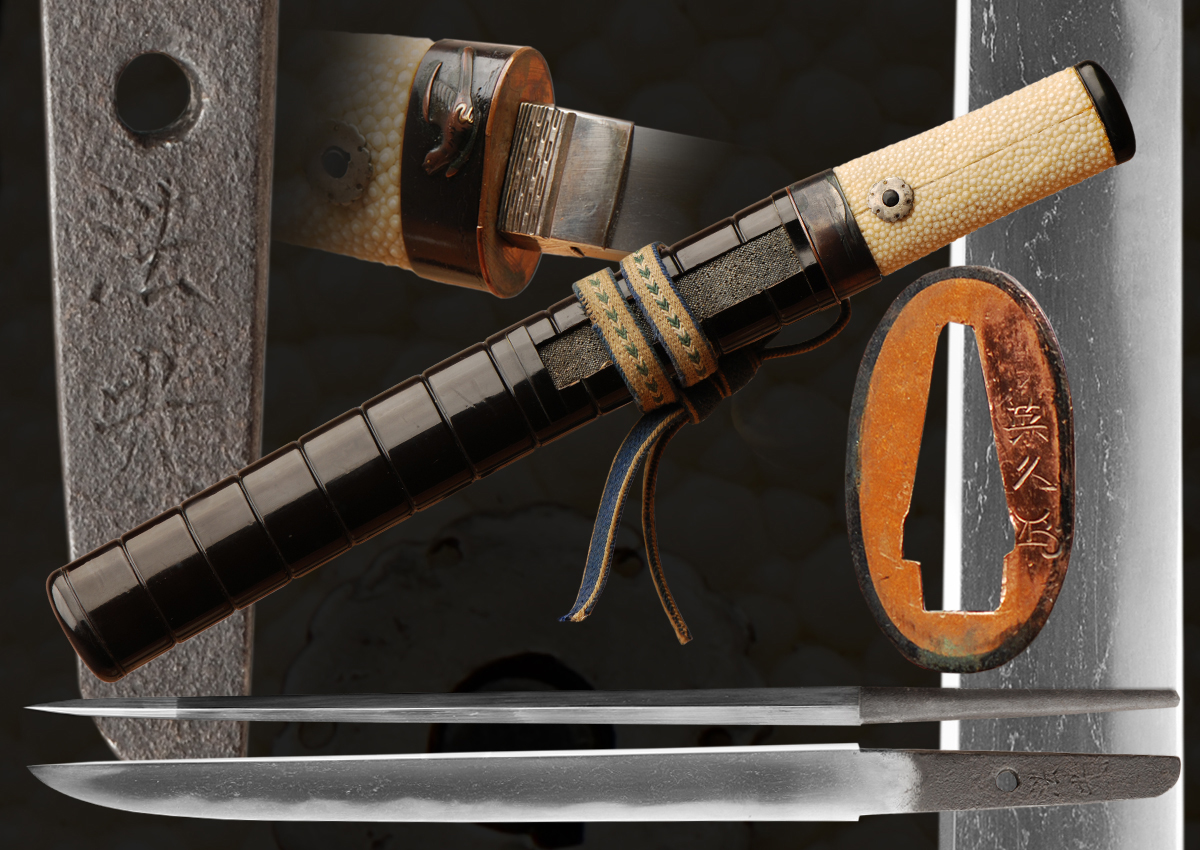
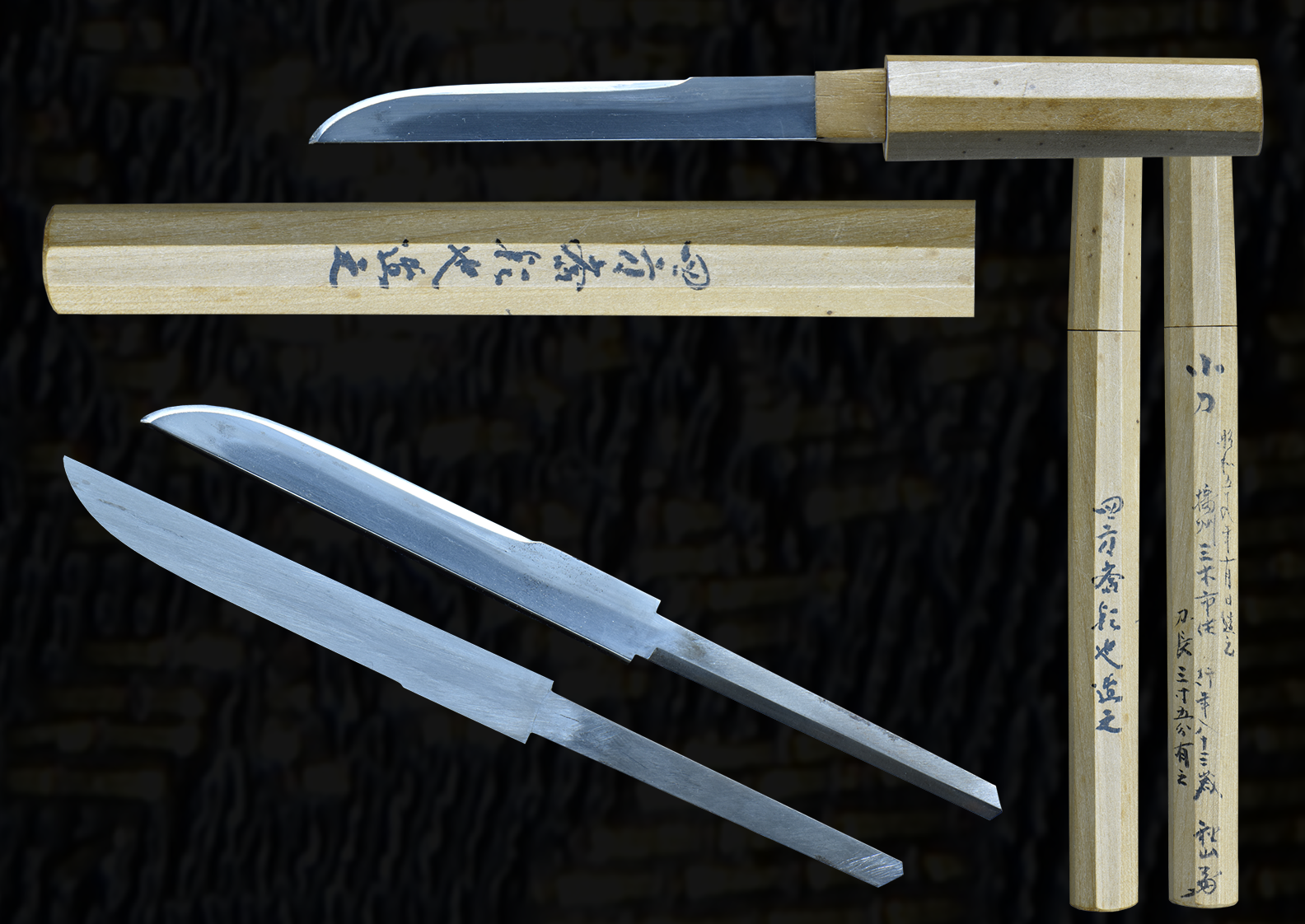
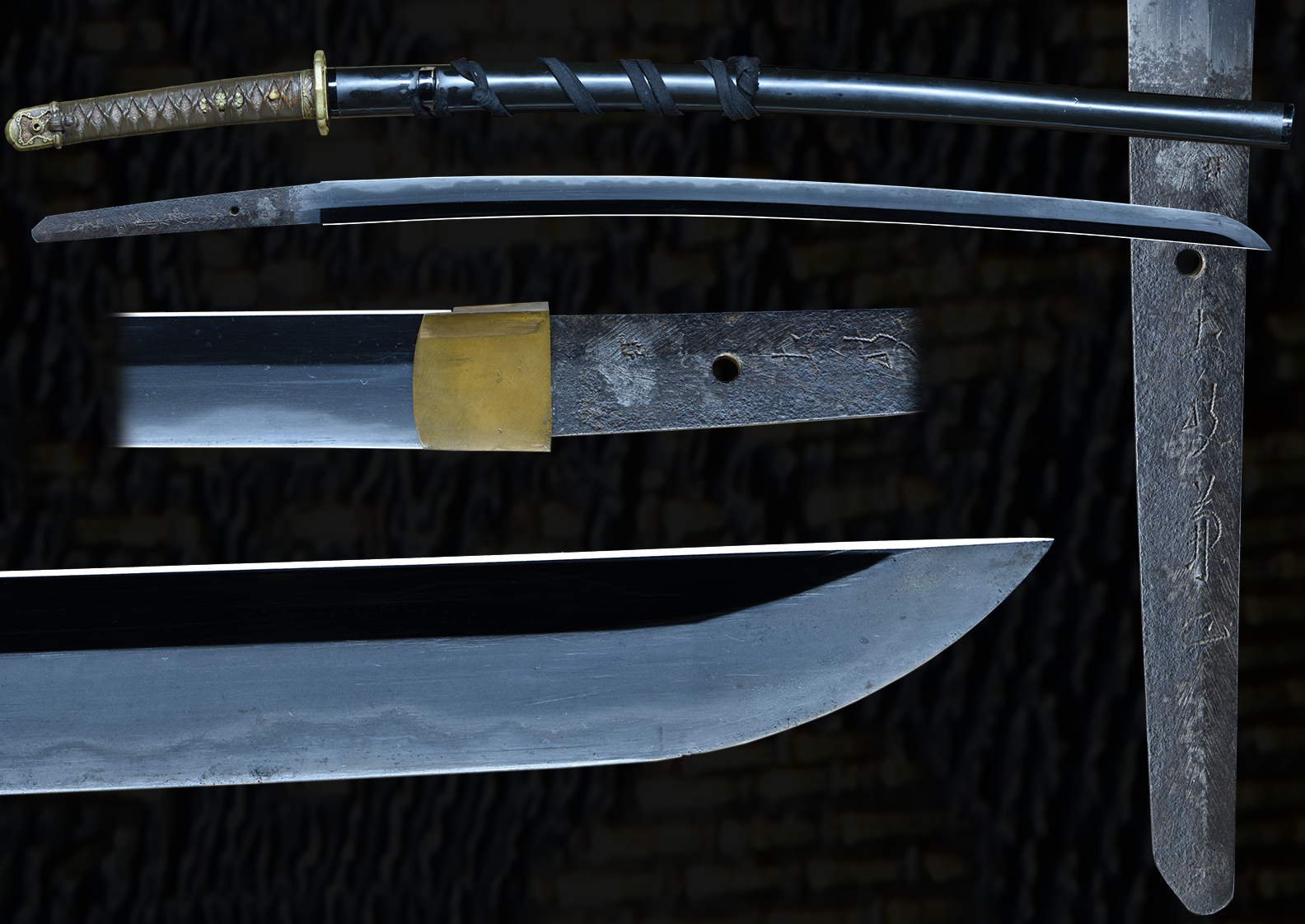
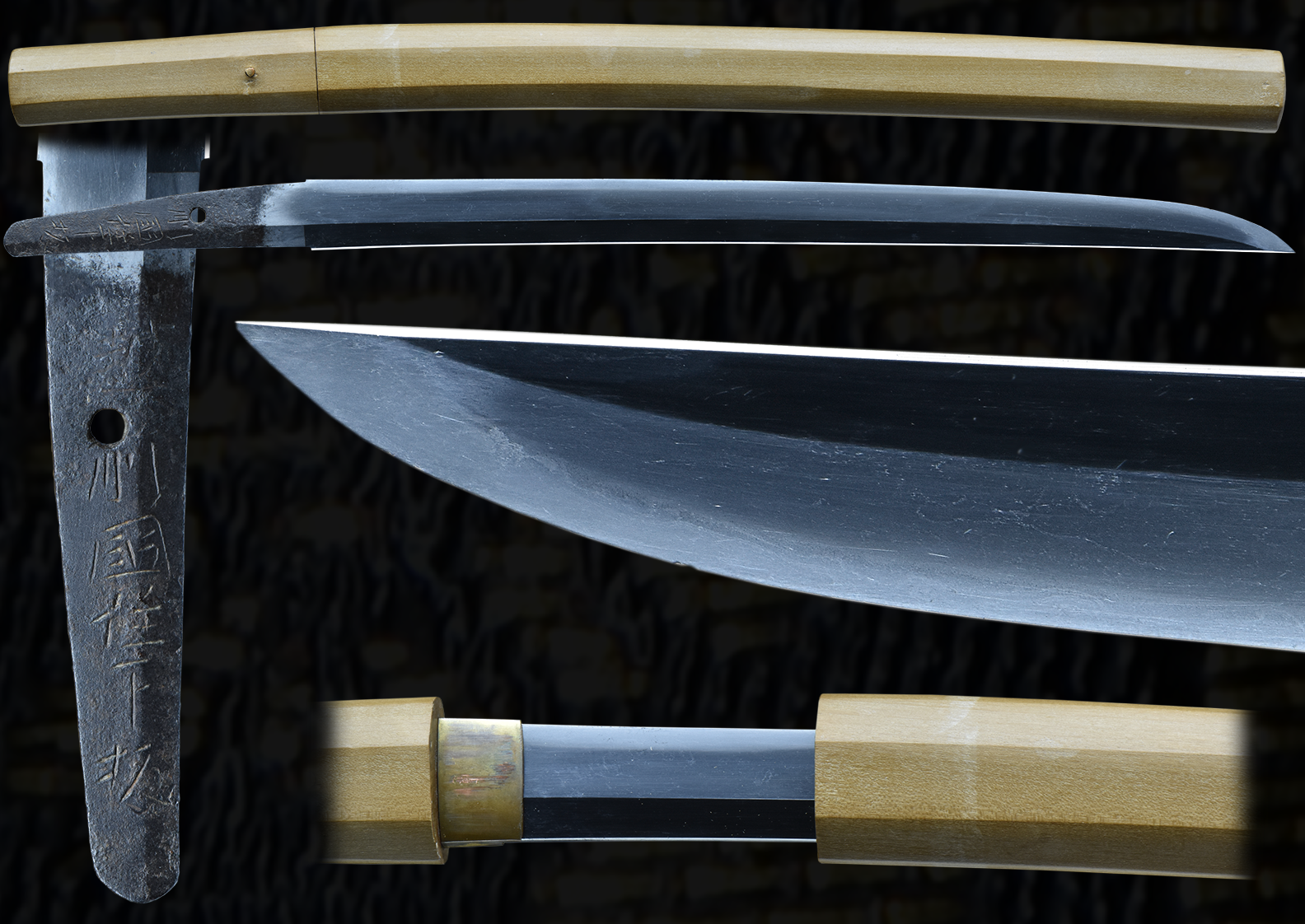
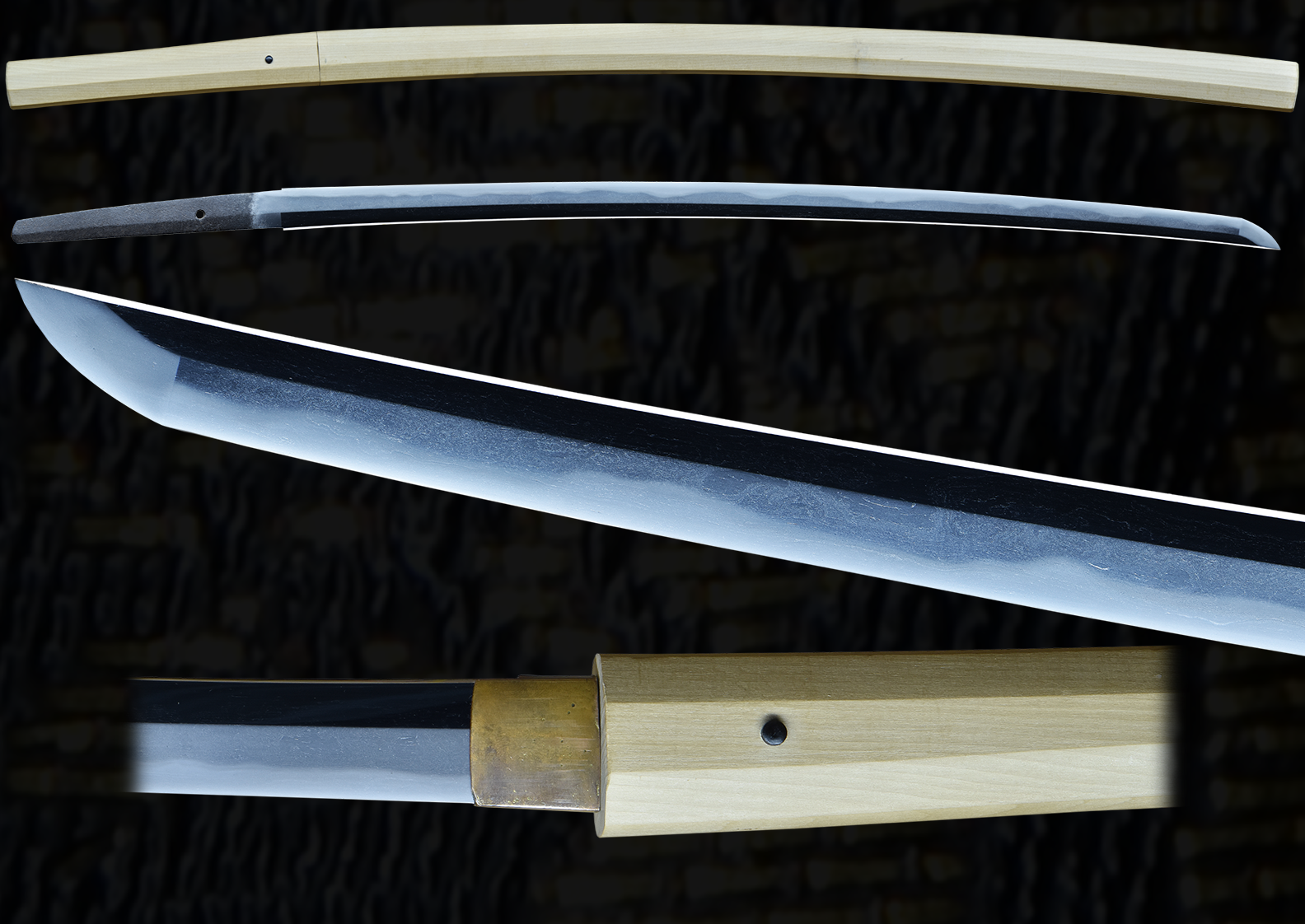
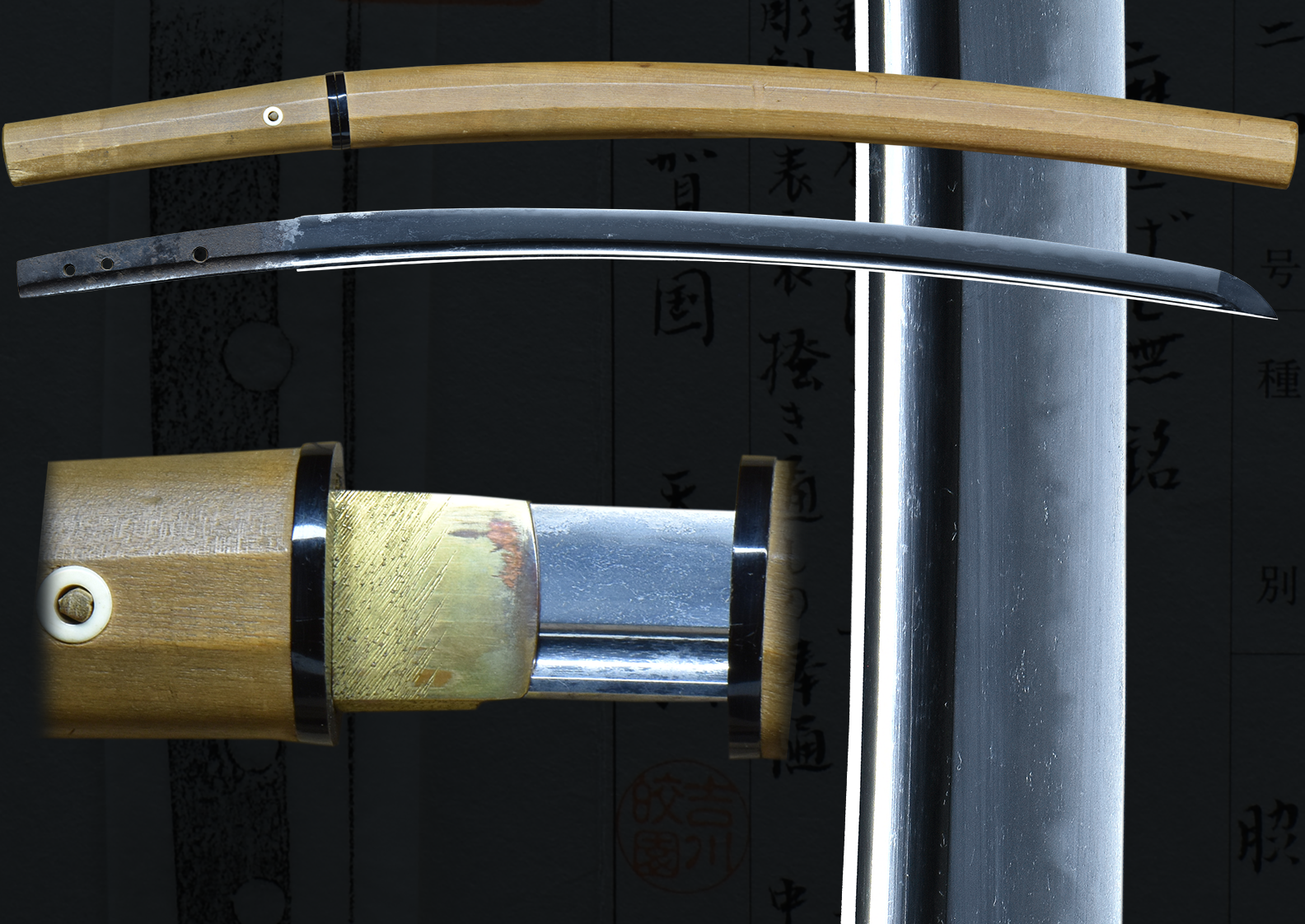





For Sale













